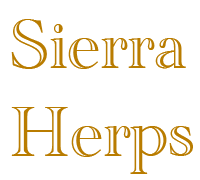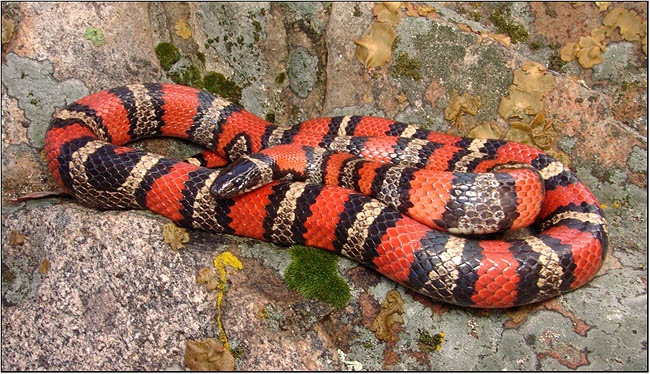
Large adult female showing extensive gray stippling on light crossbands. This trait may be more pronounced in females, but examination of additional specimens is needed to confirm. Captive animal (heterozygous for amelanism), Amealco stock. 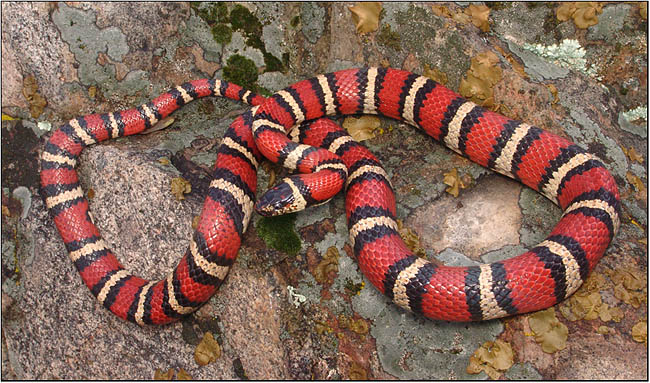
Same as preceding photo. From this angle, small dashes of red pigment atop the head are evident. 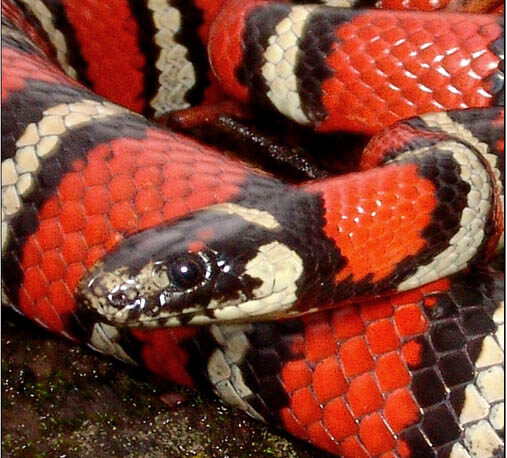
Sub-adult male ruthveni, showing traces of red pigment on the head/snout region, a highly variable trait even within populations. Captive animal, Amealco stock. 
Sub-adult male ruthveni, showing traces of red pigment on the head/snout region, a highly variable trait even within populations. Captive animal, Amealco stock. 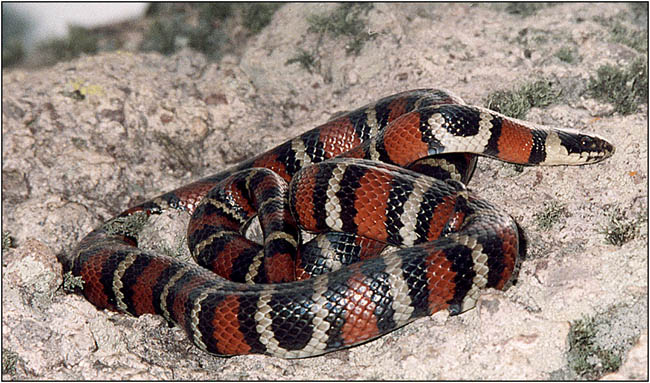
Field-collected adult ruthveni from Rancho San Francisco, near Tapalpa, Jalisco. Photo courtesy of Blake Thomason. 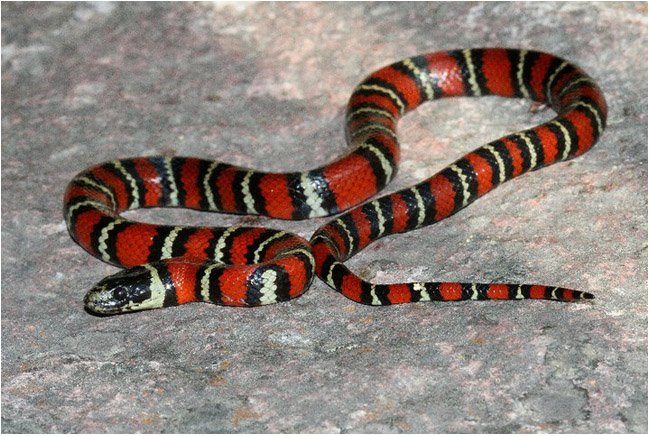
Colorful example from Tapalpa, Jalisco. Photo © Ivan Ahumada Carrillo. 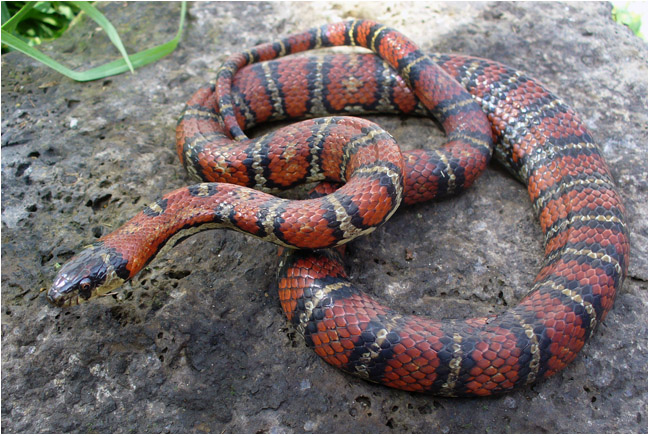
Adult ruthveni from the municipality of Nopala de Villagrán, Hidalgo, elev. 2245 m (7365 ft). This is the first record for the state of Hidalgo in central-eastern Mexico (see Roth-Monzón et al. 2011 on the Bibliography page). Photograph © 2008 Andrea Roth-Monzón.
Field photo of a ruthveni from near Tapalpa, Jalisco, 2010. Photo by C. Grünwald. 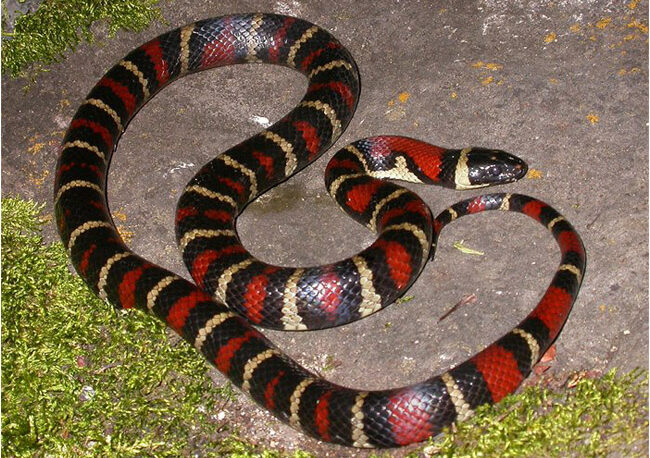
San José de Gracía, Michoacan. Photo courtesy of C. Grünwald. 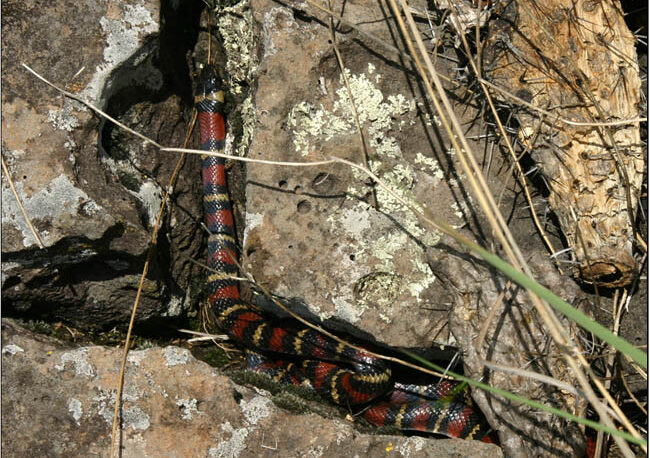
Vicinity of Jiquilpan, Michoacan. Image courtesy Chris Rodriguez.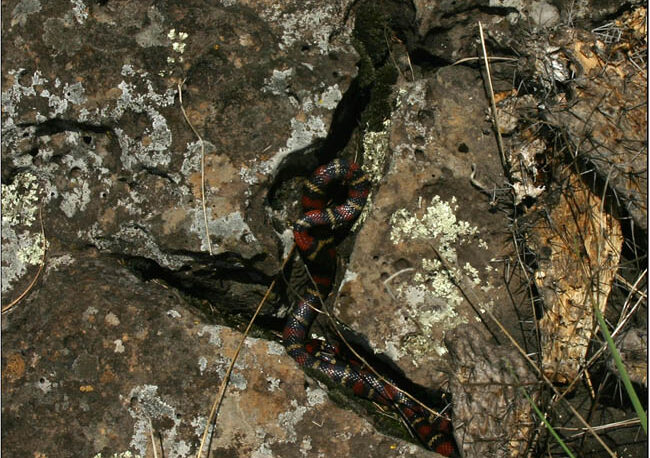
Vicinity of Jiquilpan, Michoacan. Image courtesy Chris Rodriguez.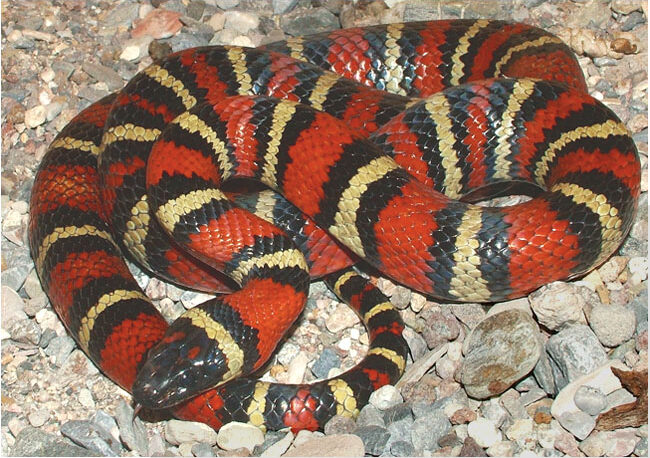
Adult female ruthveni from near Huimilpan, Querétaro. Photo copyright 2007 Matt Vaughan. 
Field-collected adult ruthveni from near Jiquilpan, Michoacan. This individual displays the more typical coloration of the white bands. Most free-living ruthveni lack the clean, bright markings typical of captive stock.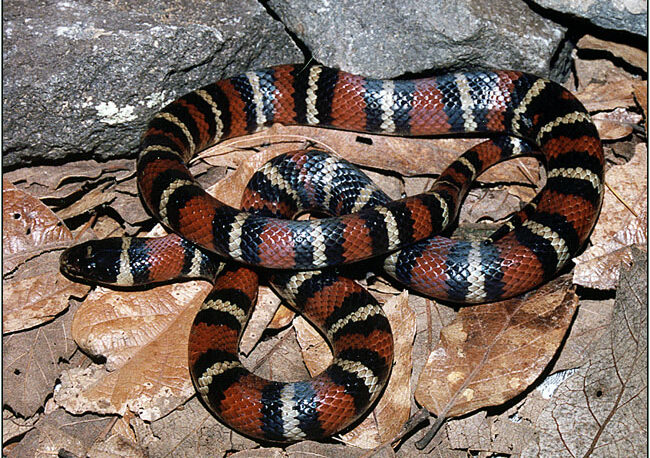
Field-collected adult ruthveni from Rancho San Francisco, near Tapalpa, Jalisco. Photo courtesy of Blake Thomason.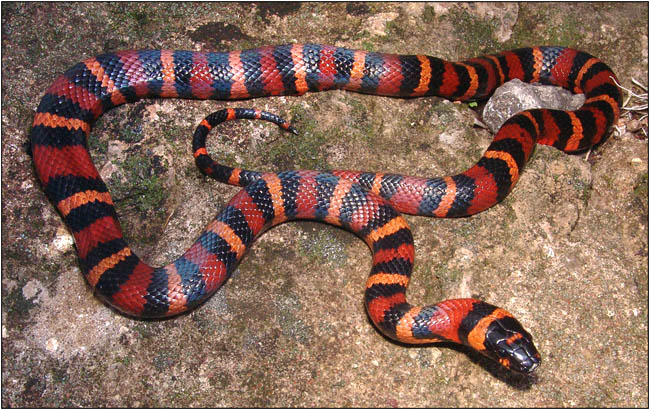
Field-collected adult ruthveni from near Jiquilpan, Michoacan. A low percentage of snakes from this population have tangerine-colored light bands, instead of the more common gray-white coloration.
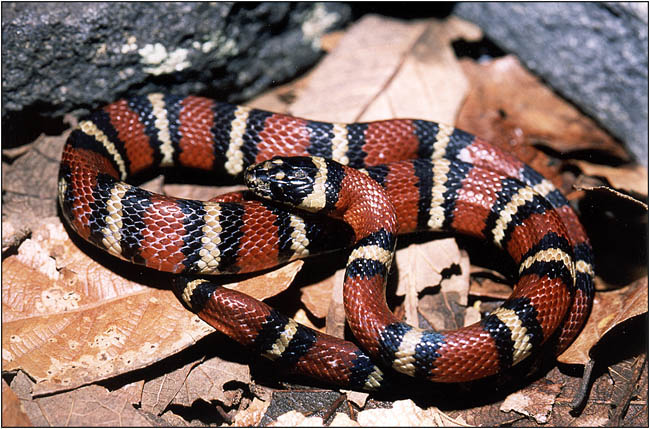
Field-collected adult ruthveni from Rancho San Francisco, near Tapalpa, Jalisco. This female appears to have recently oviposited. Photo courtesy of Blake Thomason. 
Same as preceding photo. From this angle, small dashes of red pigment atop the head are evident. 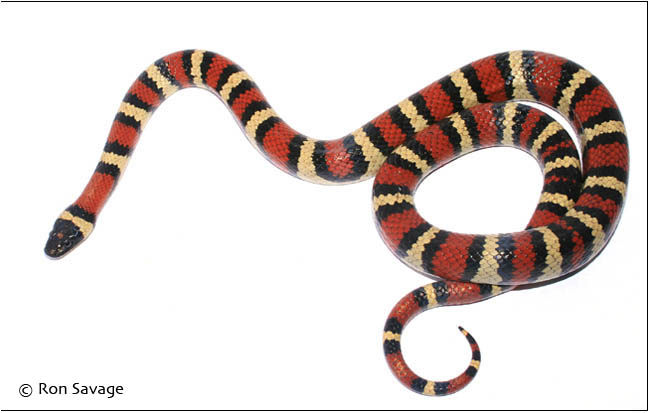
Adult female ruthveni from near Coroneo, Guanajuato. Photo copyright 2007 Ron Savage. 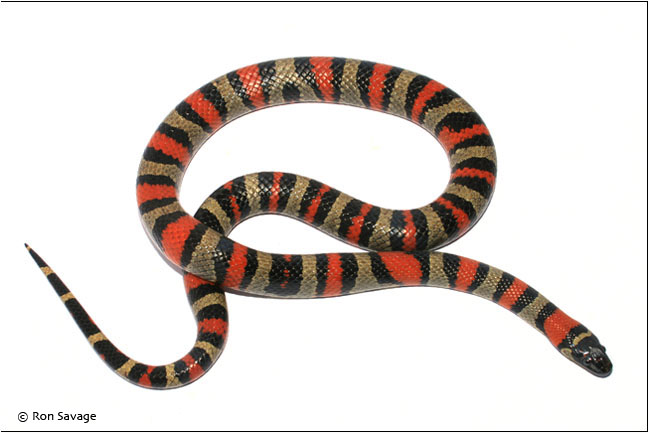
Adult female ruthveni from near Huimilpan, Querétaro. Photo copyright 2007 Ron Savage. 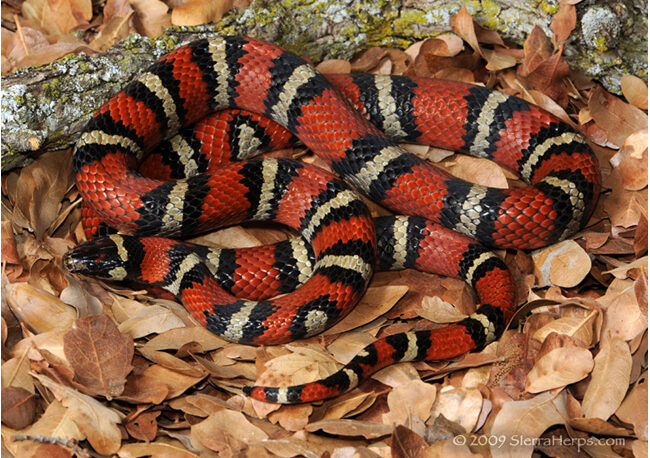
Captive-bred adult male from the Amealco, QTO lineage. 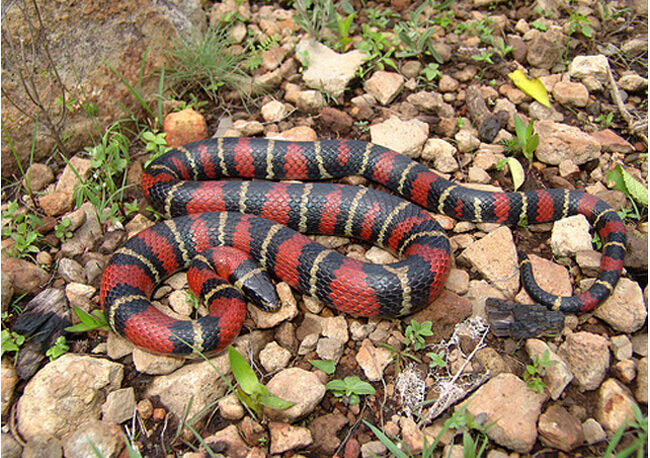
Field photo of an adult ruthveni from Tapalpa, Jalisco showing extensive black pigment. Photo courtesy of Brendan O’Connor.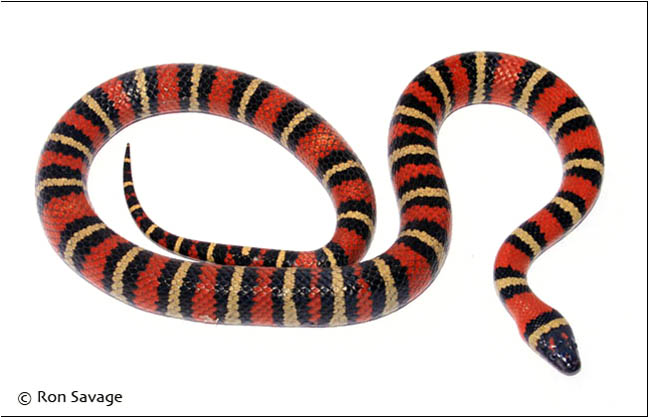
Adult female ruthveni from near Huimilpan, Querétaro. Photo copyright 2007 Ron Savage.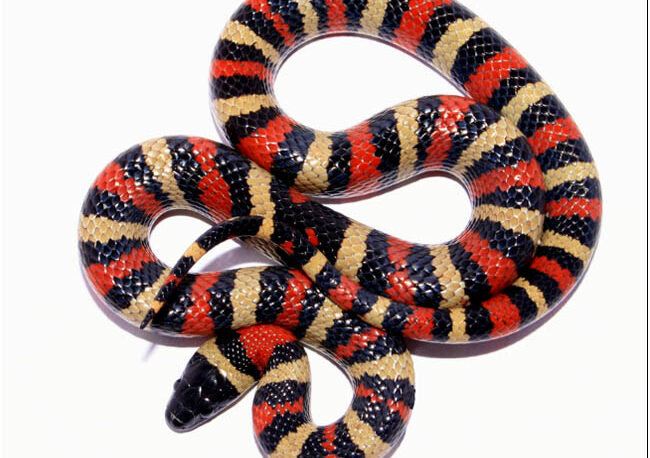
Adult female ruthveni from near Amealco, Querétaro. Photo copyright 2007 by Ron Savage. 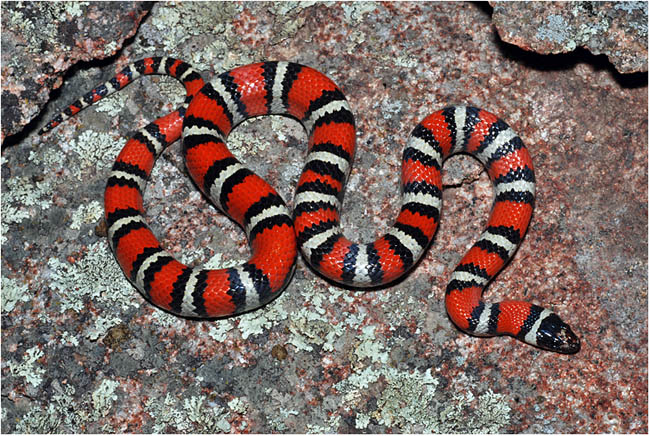
Captive produced ruthveni from Amealco, Queretaro stock. 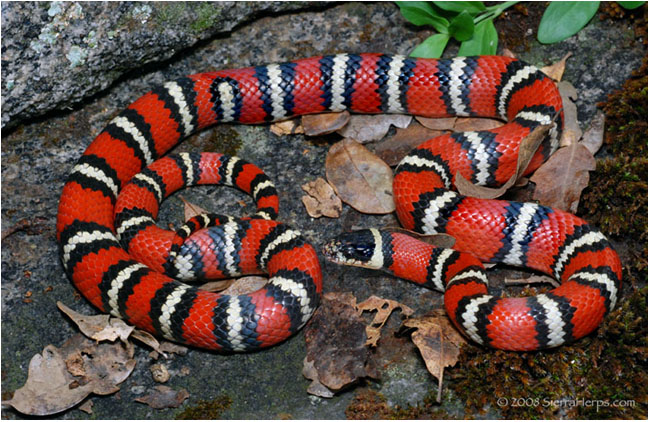
Two-year old male captive ruthveni from the Tapalpa, Jalisco line.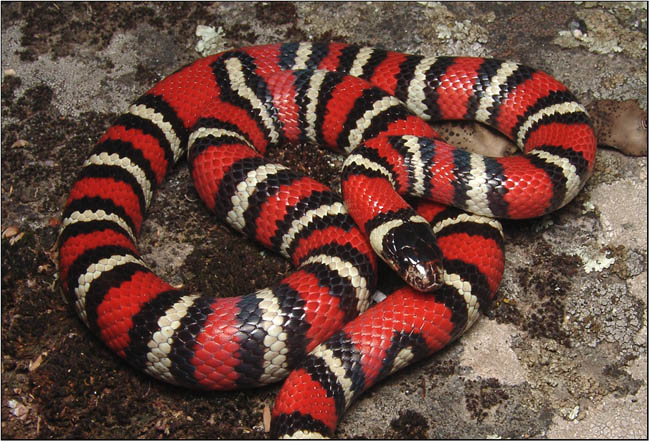
Sub-adult captive female ruthveni, from Rancho San Francisco (Tapalpa), Jalisco stock. For many years, snakes descended from the same founder group were bred and distributed as Jalisco Milksnakes (Lampropeltis triangulum arcifera).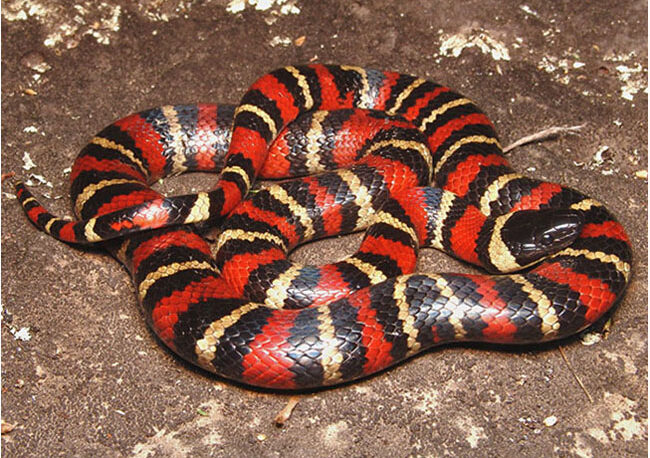
Brightly marked ruthveni, observed in the field near Jiquilpan, Michoacan. Copyright 2007 Chris Grünwald. 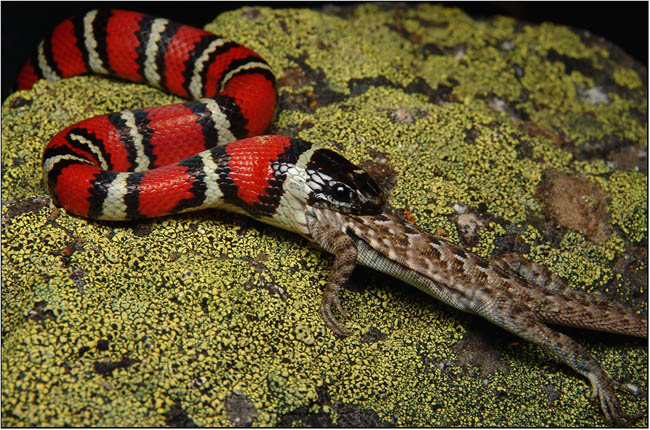
Normally pigmented hatchling, sibling to the preceding amelanistic snake.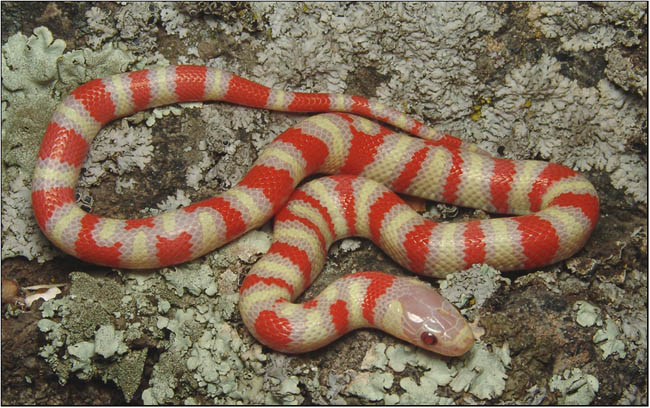
Amelanistic hatchling ruthveni, derived from captive Amealco stock. 
Sub-adult captive female ruthveni, from Rancho San Francisco (Tapalpa), Jalisco stock. For many years, snakes descended from the same founder group were bred and distributed as Jalisco Milksnakes (Lampropeltis triangulum arcifera).
